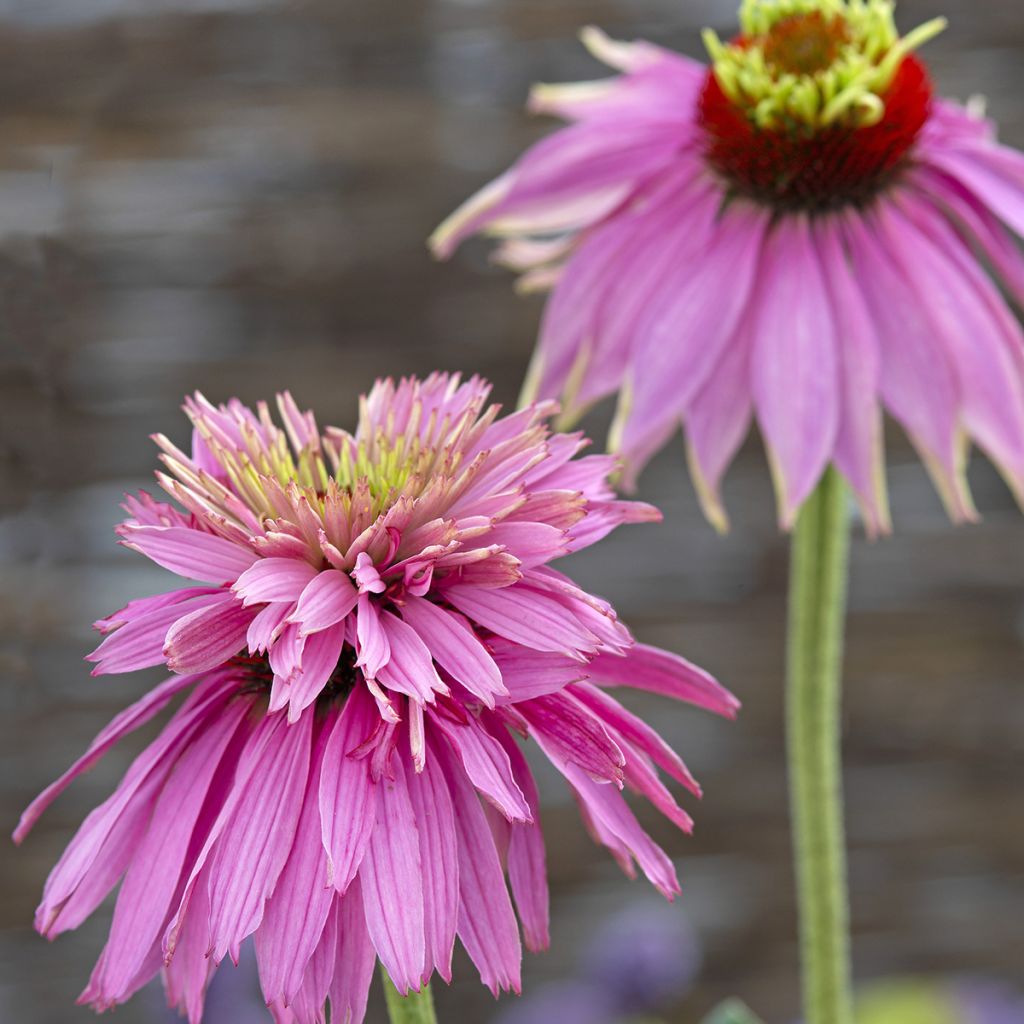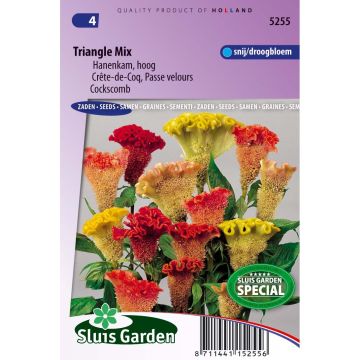

Graines d'Echinacea purpurea Double Decker - Rudbeckia pourpre
Echinacea purpurea Double Decker - Purple coneflower
Echinacea purpurea Double Decker
Eastern purple coneflower, Purple coneflower
Not really double
Josseline, 21/01/2020
Special offer!
Receive a €20 voucher for any order over €90 (excluding delivery costs, credit notes, and plastic-free options)!
1- Add your favorite plants to your cart.
2- Once you have reached €90, confirm your order (you can even choose the delivery date!).
3- As soon as your order is shipped, you will receive an email containing your voucher code, valid for 3 months (90 days).
Your voucher is unique and can only be used once, for any order with a minimum value of €20, excluding delivery costs.
Can be combined with other current offers, non-divisible and non-refundable.
Home or relay delivery (depending on size and destination)
Schedule delivery date,
and select date in basket
This plant carries a 6 months recovery warranty
More information
We guarantee the quality of our plants for a full growing cycle, and will replace at our expense any plant that fails to recover under normal climatic and planting conditions.

Would this plant suit my garden?
Set up your Plantfit profile →
Description
Echinacea purpurea 'Double Decker' is a perennial that, in its second year, blooms with a second flower, single or double in its heart. The overall effect is a surprising silhouette of a flower topped with a tousled head.
Echinacea purpurea, or Purple Coneflower, is a perennial herbaceous plant endemic to North America. It is found in the dry grasslands of the Eastern United States or in sparsely wooded areas. Its natural habitat includes heathlands as well as cultivated areas. This large Asteraceae is characterised by large pale pink to violet flower heads, sometimes white, carried by tall, very stiff stems, dark green to purple, which branch out at their ends. Typically, it measures between 60 cm (24in) and 1.20m (4ft). When the flower is immature, the ligules of the collar spread horizontally before adopting an extensively involute position (bent downwards or towards the stem). The flower colours fade over time. The central florets form a conical dome covered in rough, amber-coloured tubules tipped with reddish-brown, becoming more prominent and darker as the flower blooms. This uniqueness has earned it the name Echinacea, which comes from the Greek word 'Ekhinos' meaning hedgehog. The dark green leaves are lanceolate, pubescent, and become sessile at the top of the stem.
The 'Double Decker' variety is the exceptional result of successive selections from an initial flower that was somewhat peculiar but clearly different. There is great variation in colours in this 1-metre (3 feet) tall cultivar, but its uniqueness lies elsewhere. It is, nothing less, than a flower with two levels. This achievement is due to the German horticulturist Eugen Schleipfer. In other words, during the second year of flowering, the plant produces a normal bloom topped by a smaller, sometimes double, second flower grafted onto the heart of the first one. The overall silhouette of the inflorescence resembles a flower topped with a tousled head.
Of course, it prefers rich, sandy, well-drained soils but is not affected at all by the soil's pH. It thrives in full sun and light partial shade. It is hardy and can withstand long periods of drought. Echinacea naturalises very easily. You can use it with other perennials in a meadow where it will spontaneously establish itself. Pair it with Echinacea Coconut Lime, phlox, alliums, or large eupatoriums.
Honey-bearing and nectar-bearing, its scent attracts butterflies; by placing purple cloths near orchards, you will undoubtedly contribute to the pollination of your fruit trees. At the edge of a flower bed within meadows or in rock gardens, this beautiful daisy will naturally take ownership of the space. Trimming faded flowers stimulates new blooms. However, you can leave some stems and flower heads during winter: they are very graphic and the seeds are highly prized by birds, especially bullfinches and goldfinches. The flowers make a sensation in bouquets as part of floral compositions.
The different species of Echinacea, notably purpurea, pallida, and angustifolia, are panaceas in Native American pharmacopoeia. They are reputed to be immune-stimulating and promote the healing of winter illnesses (colds, flu, respiratory ailments). All cultivars have retained the properties of their original species.
Report an error about the product description
Flowering
Foliage
Plant habit
Botanical data
Echinacea
purpurea
Double Decker
Asteraceae
Eastern purple coneflower, Purple coneflower
Cultivar or hybrid
Other Thompson and Morgan seeds
View all →Planting and care
Sow the seeds indoors from late winter or early spring from March to May. If you started them early enough indoors, it is possible to achieve flowering in the first season. Sow between 20 and 24°C (68 and 75.2°F). Moisten the seeds by keeping them in water for a few hours. This will promote germination. Gently press the seeds onto the medium but do not bury them: they need light to germinate. The soil should remain constantly moist without excess.
Under good conditions, germination begins in just five days, but can take up to 20 days. Thin out and transplant your seedlings as soon as they are strong enough to handle into well-drained and well-worked soil. You can also gradually acclimate them to outdoor conditions for 10 to 15 days. In their natural environment, Echinacea seeds need a cold period to germinate. If you experience little or no germination, do not hesitate to move them to a cooler area at 4°C (39.2°F) for a few days.
If you prefer to sow in situ, wait until the daytime temperatures have reached an average of 20°C (68°F) to ensure that the soil is well warm enough and space your plants at least 40 cm (16in) apart.
Echinacea purpurea is highly resistant to diseases and has very few requirements. Simply avoid overwatering them once they are well established. They prefer, by far, dry conditions rather than excess water and will give you their best if the clumps are divided every 2 to 3 years. To stimulate flowering, cut back the dry stems. Keep only a few, thus allowing birds to survive the winter thanks to the seeds you provide them. You will enjoy a triple advantage:
- spontaneous reseeding for the following years.
- assured bird songs for spring.
- the very graphic appearance of a few echinacea heads under the snow.
Sowing period
Intended location
-
, onOrder confirmed
Reply from on Promesse de fleurs
Haven't found what you were looking for?
Hardiness is the lowest winter temperature a plant can endure without suffering serious damage or even dying. However, hardiness is affected by location (a sheltered area, such as a patio), protection (winter cover) and soil type (hardiness is improved by well-drained soil).

Photo Sharing Terms & Conditions
In order to encourage gardeners to interact and share their experiences, Promesse de fleurs offers various media enabling content to be uploaded onto its Site - in particular via the ‘Photo sharing’ module.
The User agrees to refrain from:
- Posting any content that is illegal, prejudicial, insulting, racist, inciteful to hatred, revisionist, contrary to public decency, that infringes on privacy or on the privacy rights of third parties, in particular the publicity rights of persons and goods, intellectual property rights, or the right to privacy.
- Submitting content on behalf of a third party;
- Impersonate the identity of a third party and/or publish any personal information about a third party;
In general, the User undertakes to refrain from any unethical behaviour.
All Content (in particular text, comments, files, images, photos, videos, creative works, etc.), which may be subject to property or intellectual property rights, image or other private rights, shall remain the property of the User, subject to the limited rights granted by the terms of the licence granted by Promesse de fleurs as stated below. Users are at liberty to publish or not to publish such Content on the Site, notably via the ‘Photo Sharing’ facility, and accept that this Content shall be made public and freely accessible, notably on the Internet.
Users further acknowledge, undertake to have ,and guarantee that they hold all necessary rights and permissions to publish such material on the Site, in particular with regard to the legislation in force pertaining to any privacy, property, intellectual property, image, or contractual rights, or rights of any other nature. By publishing such Content on the Site, Users acknowledge accepting full liability as publishers of the Content within the meaning of the law, and grant Promesse de fleurs, free of charge, an inclusive, worldwide licence for the said Content for the entire duration of its publication, including all reproduction, representation, up/downloading, displaying, performing, transmission, and storage rights.
Users also grant permission for their name to be linked to the Content and accept that this link may not always be made available.
By engaging in posting material, Users consent to their Content becoming automatically accessible on the Internet, in particular on other sites and/or blogs and/or web pages of the Promesse de fleurs site, including in particular social pages and the Promesse de fleurs catalogue.
Users may secure the removal of entrusted content free of charge by issuing a simple request via our contact form.
The flowering period indicated on our website applies to countries and regions located in USDA zone 8 (France, the United Kingdom, Ireland, the Netherlands, etc.)
It will vary according to where you live:
- In zones 9 to 10 (Italy, Spain, Greece, etc.), flowering will occur about 2 to 4 weeks earlier.
- In zones 6 to 7 (Germany, Poland, Slovenia, and lower mountainous regions), flowering will be delayed by 2 to 3 weeks.
- In zone 5 (Central Europe, Scandinavia), blooming will be delayed by 3 to 5 weeks.
In temperate climates, pruning of spring-flowering shrubs (forsythia, spireas, etc.) should be done just after flowering.
Pruning of summer-flowering shrubs (Indian Lilac, Perovskia, etc.) can be done in winter or spring.
In cold regions as well as with frost-sensitive plants, avoid pruning too early when severe frosts may still occur.
The planting period indicated on our website applies to countries and regions located in USDA zone 8 (France, United Kingdom, Ireland, Netherlands).
It will vary according to where you live:
- In Mediterranean zones (Marseille, Madrid, Milan, etc.), autumn and winter are the best planting periods.
- In continental zones (Strasbourg, Munich, Vienna, etc.), delay planting by 2 to 3 weeks in spring and bring it forward by 2 to 4 weeks in autumn.
- In mountainous regions (the Alps, Pyrenees, Carpathians, etc.), it is best to plant in late spring (May-June) or late summer (August-September).
The harvesting period indicated on our website applies to countries and regions in USDA zone 8 (France, England, Ireland, the Netherlands).
In colder areas (Scandinavia, Poland, Austria...) fruit and vegetable harvests are likely to be delayed by 3-4 weeks.
In warmer areas (Italy, Spain, Greece, etc.), harvesting will probably take place earlier, depending on weather conditions.
The sowing periods indicated on our website apply to countries and regions within USDA Zone 8 (France, UK, Ireland, Netherlands).
In colder areas (Scandinavia, Poland, Austria...), delay any outdoor sowing by 3-4 weeks, or sow under glass.
In warmer climes (Italy, Spain, Greece, etc.), bring outdoor sowing forward by a few weeks.











































